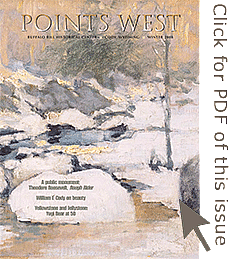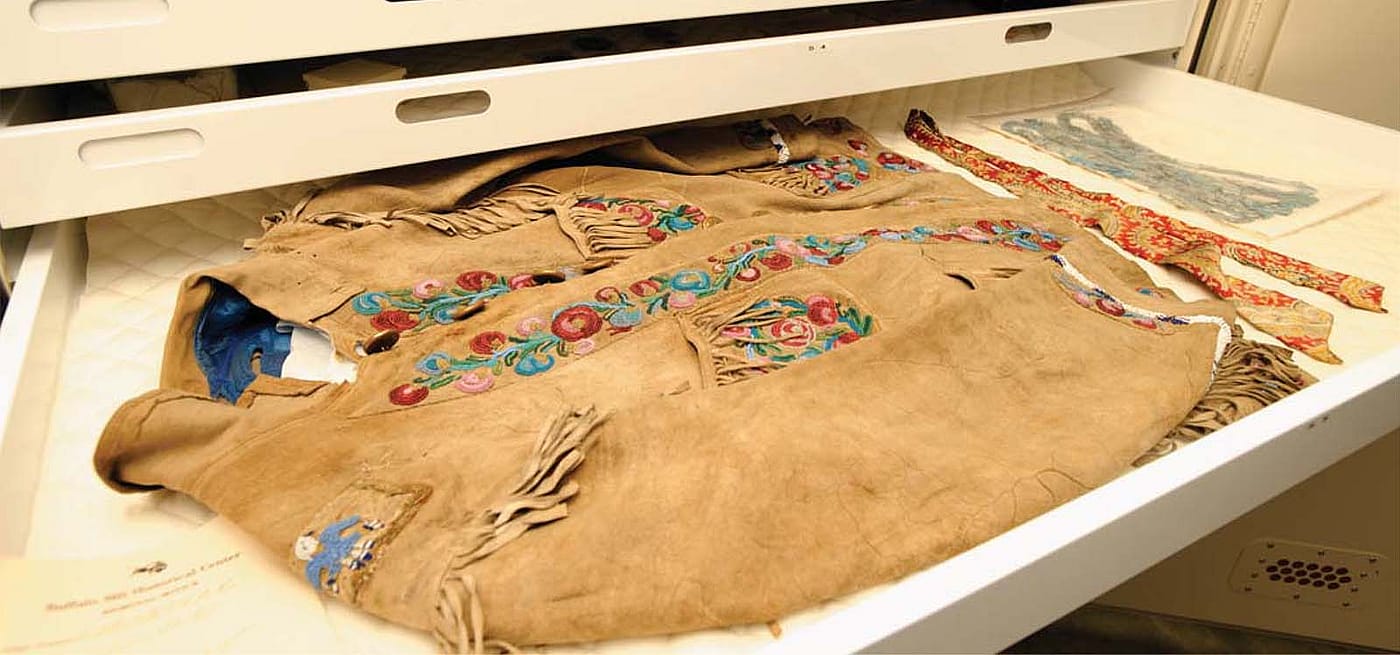
Vaulting the Extraordinary…Storing the Center’s Collections – Points West Online
Originally published in Points West magazine
Winter 2008
Vaulting the Extraordinary…Storing the Center’s Collections
Ed. note: Liz Holmes, Registrar and Director of Museum Services at the time this article was written, is now the Buffalo Bill Center of the West’s Administrative and Compliance Manager.
[Former] Registrar and Director of Museum Services Elizabeth Holmes knows a thing or two about paintings, the ones “too thick to put in a frame,” and everything in between. “The collections of the Buffalo Bill [Center of the West] sometimes seem like an iceberg: What you see on the surface belies the enormous mass below,” she observes. “With eighteen vaults, there’s clearly more to the Center’s art and artifacts than meets the visitor eye.”
![Librarian [now Library Director] Mary Robinson and [former] Cody Institute for Western American Studies Co-Director Kurt Graham examine historic maps in one of the McCracken Research Library vaults.](https://centerofthewest.org/cdn-cgi/image/width=1200,height=995,fit=crop,quality=80,scq=60,gravity=auto,sharpen=1,metadata=none,format=auto,onerror=redirect/wp-content/uploads/2020/05/PW265_MRL-MaryKurt-vault.jpg)
For a variety of reasons, a portion of the collection is maintained in storage. “Display mechanisms, light degradation, air movement, and potential handling all cause undue wear on an artifact,” Holmes says. “Consequently, artifacts are rotated from display and rested within the vaults.” Other objects are duplicates, research material, or not suitable for display.
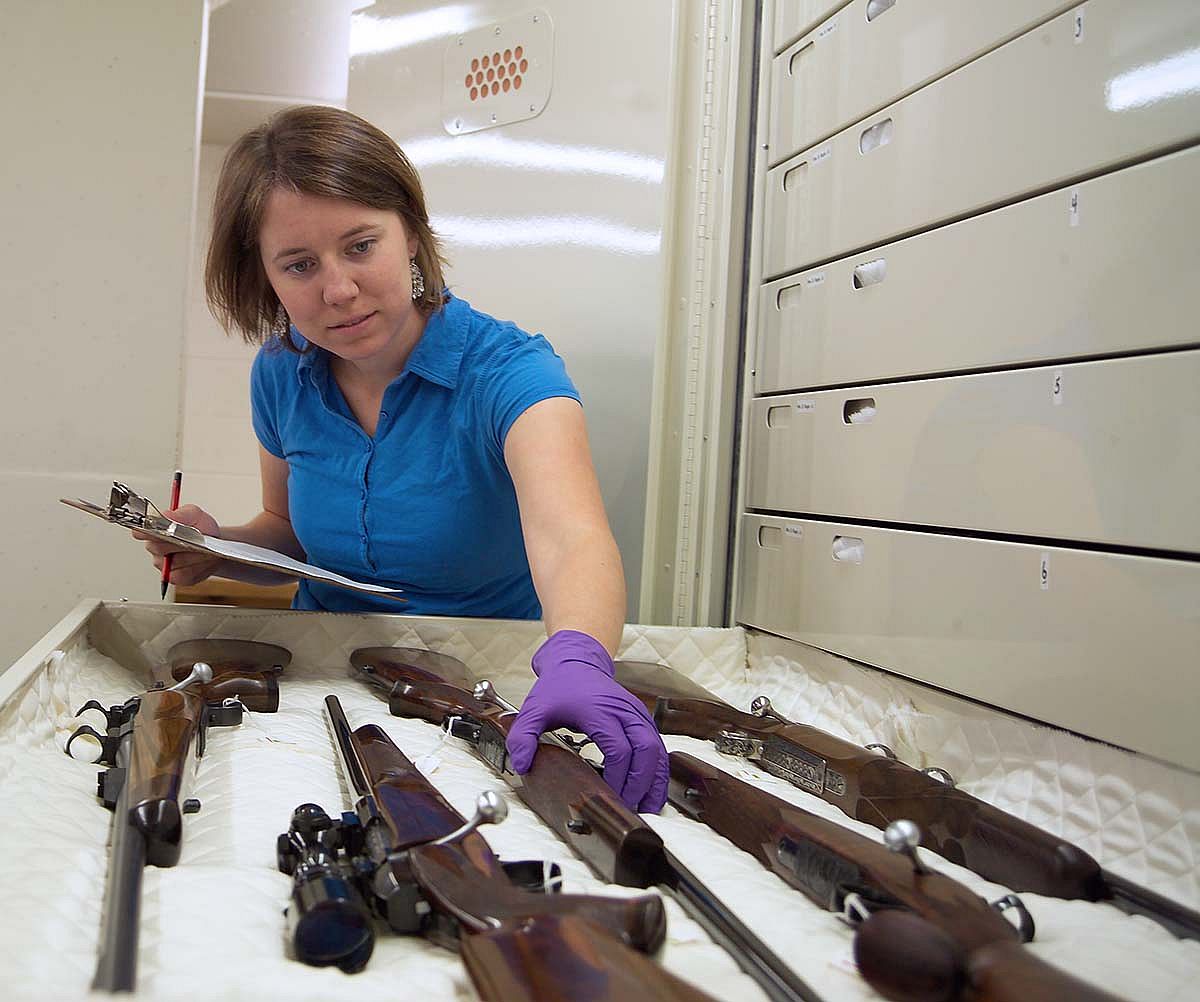
To protect objects and prevent excessive handling, vault space varies depending on the collection. “By providing a variety of storage methods, we are able to select the best method for each piece in storage,” Holmes explains. “For example, in one vault, wells are carved into the storage materials to provide a stable structure to support each artifact on the shelf. In another, fragile artifacts are stored in individualized containers within an archival box. That way, each artifact doesn’t need to be physically touched during movement, preserving them for future researchers.”
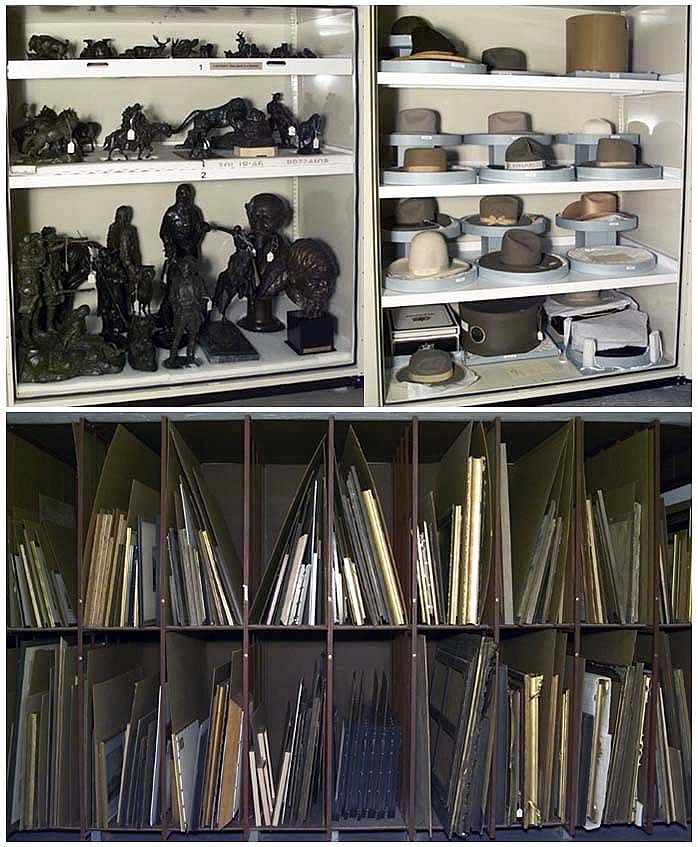
Holmes also notes that like objects are stored together. “Having all the hats together, for instance, means only one or two cabinets need to be opened to locate a type of artifact,” she continues, thereby avoiding excessive movement.
![Plains Indian Museum Curator [now Curator Emerita] Emma Hansen reviews the museum's moccasins, carefully stored to prevent damage.](https://centerofthewest.org/cdn-cgi/image/width=877,height=1200,fit=crop,quality=80,scq=60,gravity=auto,sharpen=1,metadata=none,format=auto,onerror=redirect/wp-content/uploads/2020/05/PW265_EmmaHansen-PIMvault.jpg)
Some vaults have to be “super-sized” to house the largest items. In the Plains Indian Museum, these items include dresses, horse gear, and animal hides/robes. “Generally, for storage, an artifact is not folded or distorted to fit into a desired space,” Holmes says. “This prevents stress points on an artifact.”
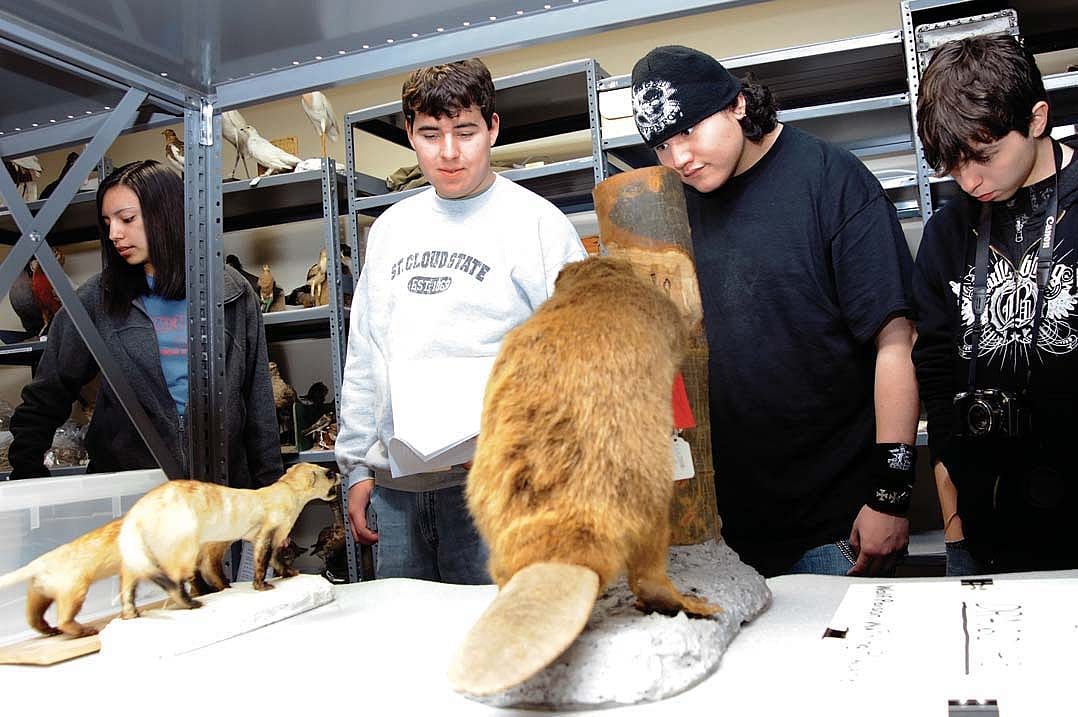
Both in the galleries and in the vaults, Holmes can certainly attest to author and humorist Marvin Cohen’s observation, “The museum is full of interesting things. All kinds of paintings are there. And then paintings too thick to put in a frame, that they call sculpture…”
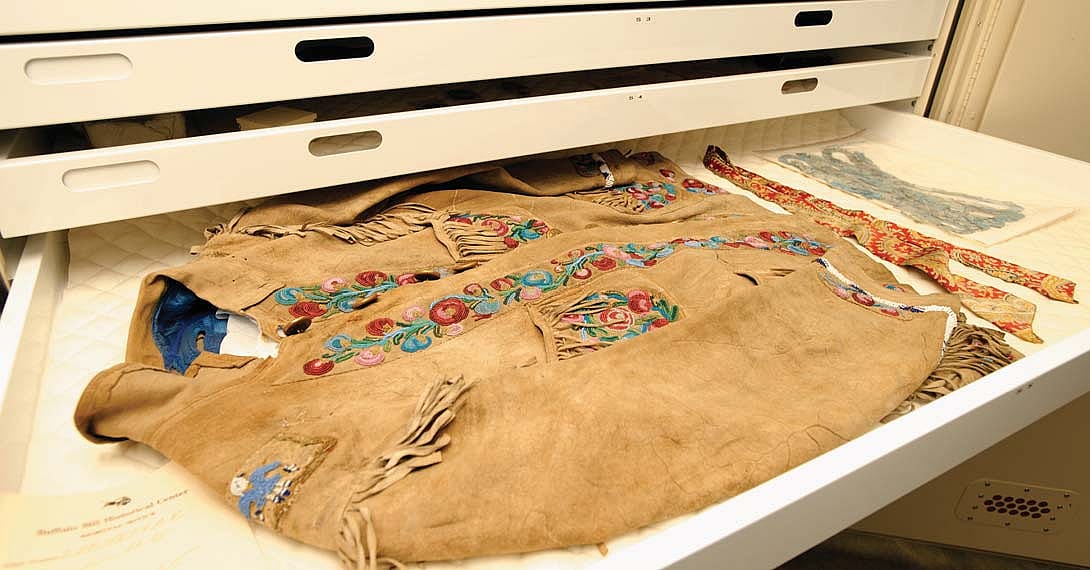
Post 265
Written By
Nancy McClure
Nancy now does Grants & Foundations Relations for the Center of the West's Development Department, but was formerly the Content Producer for the Center's Public Relations Department, where her work included writing and updating website content, publicizing events, copy editing, working with images, and producing the e-newsletter Western Wire. Her current job is seeking and applying for funding from government grants and private foundations. In her spare time, Nancy enjoys photography, reading, flower gardening, and playing the flute.
